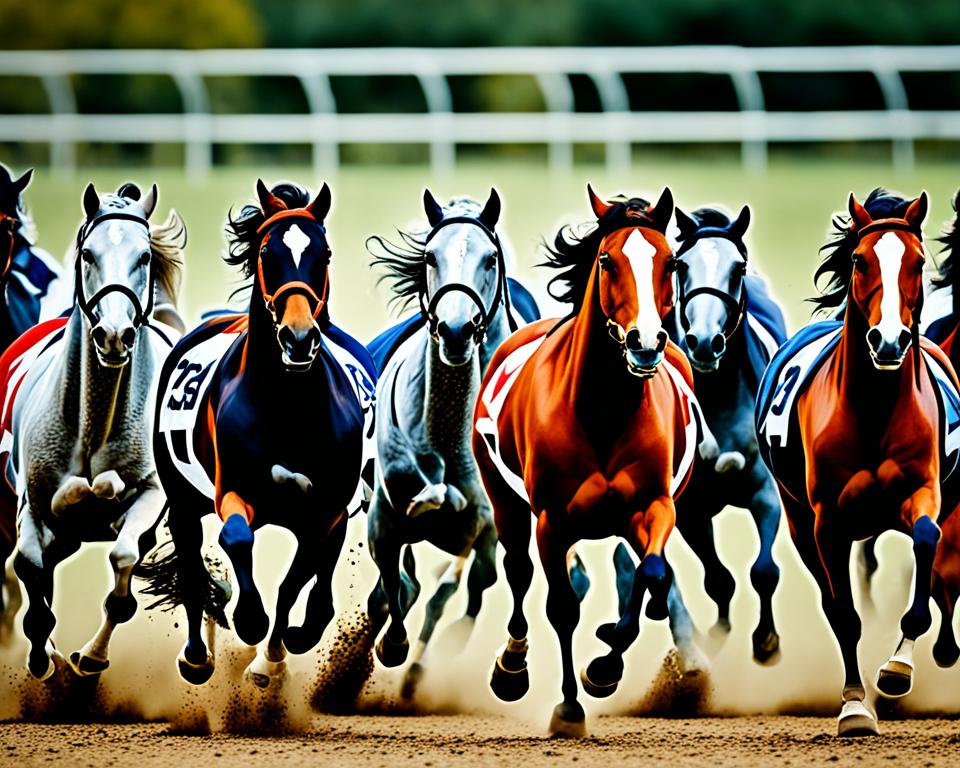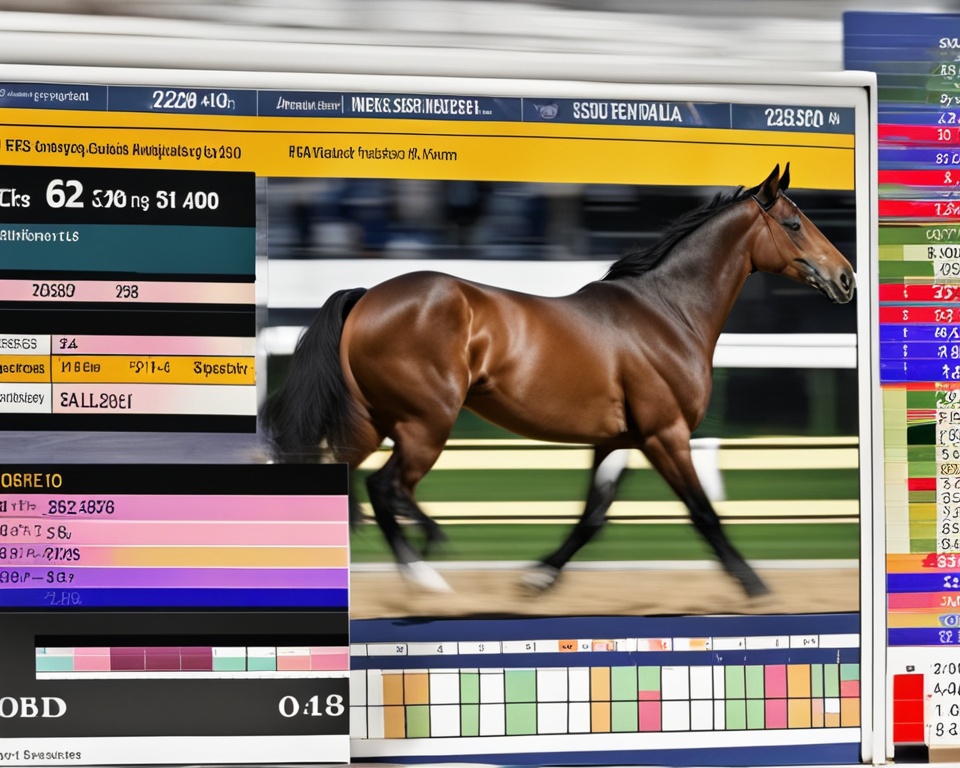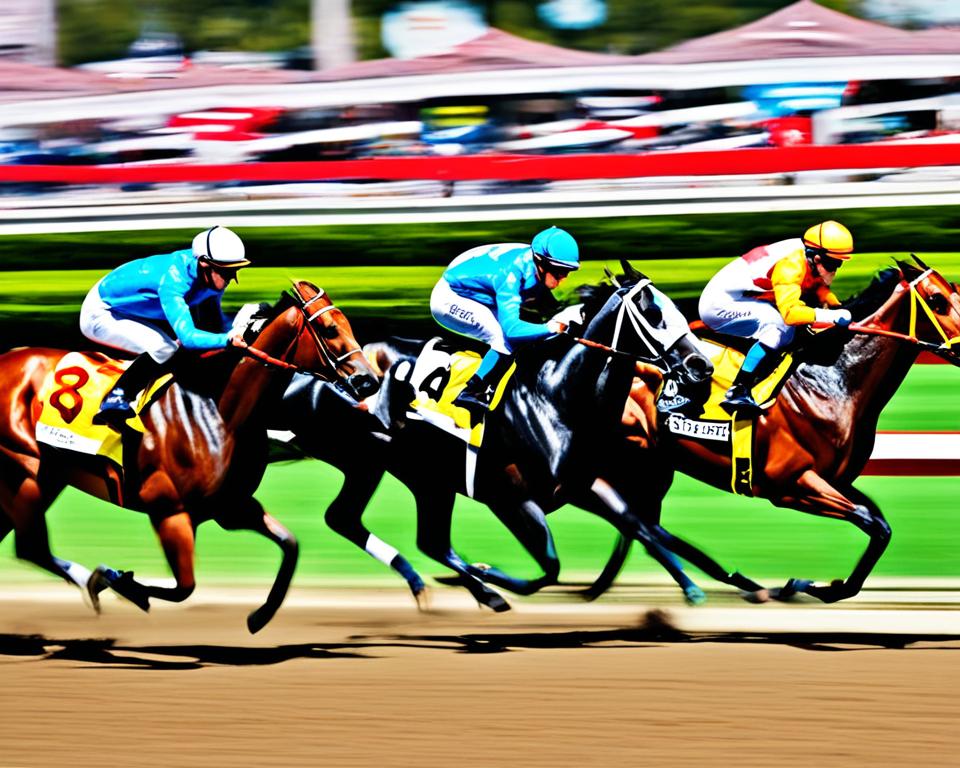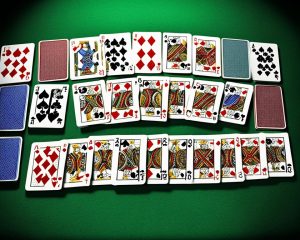
In the dynamic world of horse racing, one of the most captivating aspects for bettors is the constant fluctuation of odds. Odds represent the likelihood of a horse winning a race, and their changes can significantly impact the potential payouts and betting strategies. This comprehensive article will explore the key factors that contribute to the ever-evolving nature of horse racing odds, empowering bettors to make more informed decisions and potentially capitalize on value opportunities.
The dynamic nature of horse racing odds is a reflection of the numerous variables at play. From the impact of betting volumes to the influence of horse form and race conditions, a multitude of factors shape the odds and drive their continuous adjustments. By understanding these underlying mechanics, bettors can better navigate the real-time odds updates and the volatility inherent in the sport of horse racing.
Delving deeper, we’ll examine how the influx of public money and the presence of sharp money can trigger significant line movements in the odds. Additionally, we’ll explore how a horse’s recent performance, injuries, and fitness concerns can prompt odds adjustments as bettors reassess their chances of winning.
Moreover, the race conditions, including track conditions, weather, and distance or surface changes, can also contribute to odds shifts as bettors reevaluate the suitability of each horse to the new environment. The jockey and trainer factors, as well as unexpected events like late scratches, further add to the dynamic nature of horse racing odds.
By understanding the key factors that influence the odds movements in horse racing, bettors can develop more effective betting strategies and stay ahead of the game. From monitoring real-time odds updates to identifying value opportunities, this article will provide the insights necessary to navigate the constantly changing landscape of horse racing odds.
Read interesting things at : luoghievisioni
Key Takeaways
- Horse racing odds are inherently dynamic and constantly fluctuate due to a variety of factors.
- Betting volumes, horse form, race conditions, and other crucial elements can contribute to significant odds changes.
- Monitoring real-time odds updates and understanding the underlying drivers of odds movements are essential for making informed betting decisions.
- Adapting betting strategies to capitalize on value opportunities presented by odds changes can enhance the potential for profitable outcomes.
- The role of odds compilers and bookmakers in maintaining a balanced book also plays a part in the volatility of horse racing odds.
Understanding Horse Racing Odds
To fully grasp the reasons behind odds changes in horse racing, it’s crucial to first understand the concept of [what are horse racing odds]. Odds represent the likelihood of a horse winning a race, expressed as a ratio or fraction. They indicate the potential payout a bettor would receive if their chosen horse wins. This section will provide a detailed explanation of what [what are horse racing odds] are and how to [how to read horse racing odds], laying the foundation for understanding the dynamic nature of these [understanding horse racing odds].
What Are Horse Racing Odds?
In the world of horse racing, odds serve as a numerical representation of the probability of a horse winning a particular race. They are typically displayed in the form of a ratio, such as 5:1 or 3/2, or as a decimal, like 6.0 or 2.5. These odds reflect the bookmaker’s or betting exchange’s assessment of the horse’s chances of emerging victorious, based on factors such as the horse’s past performance, current form, and other relevant considerations.
How to Read Horse Racing Odds
Interpreting [how to read horse racing odds] is crucial for bettors to understand the potential returns on their wagers. The numerator in the odds ratio represents the amount a bettor would need to wager to win the denominator amount. For example, odds of 5:1 mean that a $1 bet would return $5 in winnings, plus the original $1 stake. Conversely, odds of 1:5 indicate that a $5 bet would be required to win $1 in profit. Understanding the different formats and their implications is essential for making informed betting decisions.
Dynamic Nature of Horse Racing Odds
The dynamic nature of horse racing odds is a key aspect of this captivating sport. Odds are constantly in flux, reflecting the constant flow of information and the ever-changing perceptions of each horse’s chances of winning. This real-time odds updates in horse racing are driven by a multitude of factors, allowing bettors to capitalize on the inherent odds fluctuations and volatility that define the industry.
Real-Time Odds Updates
Bookmakers and betting exchanges are at the forefront of these real-time odds updates, continuously adjusting the odds based on the latest information and betting activity. As new data, such as horse performance, jockey changes, or weather conditions, becomes available, these industry professionals quickly incorporate it into their pricing models, ensuring the odds remain reflective of the current landscape.
Odds Fluctuations and Volatility
The odds fluctuations and volatility in horse racing are a testament to the dynamic nature of the sport. Significant swings in odds can occur within minutes, or even seconds, as bettors react to the latest developments. This volatility presents both opportunities and challenges for savvy bettors, who must closely monitor the odds and adapt their strategies accordingly to capitalize on the dynamic nature of horse racing odds.
Betting Volumes and Odds Changes
One of the primary drivers behind the dynamic nature of horse racing odds is the volume of bets placed on each horse. As bettors place their wagers, the influx of public money can cause significant shifts in the odds, as bookmakers and betting exchanges adjust the lines to balance their books and manage their risk exposure.
Impact of Public Money
When a large number of bettors back a particular horse, the surge of public money flowing into that horse’s odds can cause the odds to shorten, or decrease, as the perceived likelihood of that horse winning increases from the bookmaker’s perspective. Conversely, horses that attract less public support may see their odds lengthen, or increase, as bookmakers seek to entice more bets on those competitors.
Sharp Money and Line Movements
In contrast to the public money, sharp money refers to wagers placed by experienced, well-informed bettors who are often seen as having a more sophisticated understanding of the factors influencing horse racing odds. The betting activity of these sharp bettors can trigger substantial line movements in the odds, as bookmakers quickly adjust their prices to accommodate the influx of knowledgeable money and maintain a balanced book.
Horse Form and Odds Adjustments
The current form and fitness of a horse are crucial factors that can influence the odds for a horse race. A horse’s recent performance, including past race results and training workouts, can lead to significant adjustments in the betting lines as bettors reassess the horse’s chances of winning.
Recent Performance and Workouts
A horse’s recent performance, such as its finishes in previous races and the quality of its training workouts, can have a significant impact on the odds. Bettors closely follow a horse’s form, as a string of strong performances or impressive workout times can indicate that the horse is in peak condition and may be poised for a win. Conversely, a horse’s poor recent results or subpar workouts can lead bookmakers to adjust the odds, reflecting the perceived decrease in the horse’s chances of winning the upcoming race.
Injuries and Fitness Concerns
Injuries or fitness concerns about a horse can also cause significant shifts in the betting lines. If a horse is reported to be dealing with an injury or is suspected of not being in peak physical condition, bettors will reassess the horse’s chances of winning the race. Bookmakers and betting exchanges will then adjust the odds accordingly, reflecting the increased risk and uncertainty surrounding the horse’s ability to perform at its best. Closely monitoring any news or updates about a horse’s health and fitness can be crucial for bettors looking to capitalize on potential value opportunities in the odds.

Race Conditions and Odds Shifts
The specific conditions of a horse race can have a significant impact on the odds. From the impact of track conditions and weather to changes in race distance and surface, these factors play a crucial role in shaping the betting lines and prompting odds adjustments.
Track Conditions and Weather
The state of the racetrack, whether it’s fast, sloppy, or muddy, can greatly influence a horse’s performance and, consequently, the odds. Certain horses may thrive in specific track conditions, while others may struggle. Similarly, the prevailing weather conditions can also impact the odds, as bettors adjust their assessments based on how the horses are expected to handle the changing environment.
Distance and Surface Changes
Alterations in the race distance or surface type can prompt significant odds shifts as bettors reevaluate each horse’s suitability for the new race parameters. For example, a horse that excels on dirt may not perform as well on a turf course, leading to a change in its odds. Similarly, a horse that is known to thrive at a shorter distance may see its odds adjusted when stepping up to a longer race.
Closely monitoring the impact of race conditions, such as track quality, weather, distance, and surface, is crucial for understanding the dynamics behind odds movements in horse racing. By staying informed about these factors, bettors can make more informed decisions and potentially capitalize on value opportunities presented by the constantly shifting betting lines.
Jockey and Trainer Factors
In the high-stakes world of horse racing, the performance and reputation of a horse’s jockey and trainer can significantly influence the odds for a particular race. Bettors closely analyze the jockey and trainer factors affecting horse racing odds, as these key personnel can play a crucial role in a horse’s chances of winning.
Experienced, skilled jockeys with a proven track record of success are often favored by bettors, as their expertise in riding and race strategy can give a horse a competitive edge. Jockeys with a string of recent wins or top-tier finishes may see their mounts’ odds improve, as bettors recognize the jockey’s ability to guide the horse to victory.
Similarly, the caliber of a horse’s trainer can sway the betting odds. Trainers with a reputation for consistently producing winning horses, implementing effective training regimens, and making astute strategic decisions are often highly sought after by bettors. A horse trained by a renowned, successful trainer may see its odds shorten as bettors place their trust in the trainer’s expertise.
Conversely, jockeys or trainers experiencing a lull in performance or facing fitness or disciplinary concerns may see their horses’ odds lengthen, as bettors become more cautious about their ability to deliver a winning result. The jockey and trainer factors affecting horse racing odds are closely monitored and factored into the betting lines, reflecting the significant influence these key personnel can have on a horse’s chances of triumph.
Odds Changes Due to Late Scratches
In the hectic hours and minutes leading up to a horse race, unexpected events can trigger significant shifts in the odds changes due to late scratches in horse racing. One such scenario is the withdrawal of a horse from the race, often due to injury or other unforeseen circumstances. When a late scratch occurs, bookmakers and betting exchanges are compelled to quickly adjust the odds for the remaining horses in the field.
The withdrawal of a horse can have a substantial impact on the betting landscape, as the absence of a contender can alter the perceived dynamics of the race. Bookmakers and betting platforms must rapidly recalculate the probabilities and potential payouts for the remaining horses, taking into account the new competitive landscape. This rapid adjustment to odds changes due to late scratches in horse racing is crucial in maintaining the integrity and accuracy of the betting markets.
Bettors must closely monitor the race information leading up to the start, as late scratches can present both risks and opportunities. A late scratch may unexpectedly enhance the chances of a previously overlooked horse, leading to a shift in the odds that savvy bettors can capitalize on. Conversely, the withdrawal of a heavily backed favorite can cause a ripple effect, leading to a realignment of the betting lines that may require bettors to reassess their wagers.
Understanding the dynamics of odds changes due to late scratches in horse racing is essential for bettors who seek to make informed decisions and potentially capitalize on value opportunities presented by these unexpected events. By staying vigilant and closely following the latest race information, bettors can adapt their strategies to navigate the volatile nature of horse racing odds and potentially secure favorable returns.
Why Do Horse Racing Odds Change?
The ever-changing nature of horse racing odds is a captivating aspect of the sport, driven by a complex interplay of various factors. To understand the key reasons behind why horse racing odds constantly fluctuate, we’ll delve into the essential elements that influence these dynamic movements.
Key Factors Affecting Odds Movements
Betting volumes play a pivotal role in shaping the odds. As more bettors back a particular horse, the odds for that horse tend to shorten, reflecting the increased demand and perceived likelihood of it winning. Conversely, if a horse receives less public money, its odds may lengthen, indicating a perceived decrease in its chances of victory.
The form and fitness of the horses in a race can also significantly impact odds movements. A horse’s recent performance, including its wins, losses, and workout times, can lead to adjustments in the odds as bettors reassess its chances. Similarly, any injuries or fitness concerns about a horse can cause its odds to fluctuate as the market reacts to the potential impact on its ability to compete at its best.
Race conditions, such as track surface, weather, and distance, can also influence odds changes. Certain horses may perform better or worse in specific track environments or distances, leading bettors to adjust their assessments and causing the odds to shift accordingly.
The reputation and recent success of a horse’s jockey and trainer can also contribute to odds movements, as bettors factor in the potential impact of these key personnel on the horse’s chances of winning.
Lastly, unexpected events such as late scratches can prompt bookmakers and betting exchanges to quickly adjust the odds for the remaining horses in the field, reflecting the altered dynamics of the race.
By understanding these key factors that drive odds movements in horse racing, bettors can better navigate the dynamic landscape and identify potential value opportunities as the odds fluctuate throughout the race day.

Importance of Monitoring Odds Changes
In the dynamic and volatile world of horse racing, closely monitoring the fluctuations in odds is of paramount importance for savvy bettors. The importance of monitoring odds changes in horse racing cannot be overstated, as these constant shifts can present valuable opportunities for those who understand the underlying factors driving the movements.
Adapting Betting Strategies
By closely following the changes in horse racing odds, bettors can adapt their betting strategies to capitalize on the identified value opportunities. This adaptability is crucial, as the odds can shift significantly due to a variety of factors, including betting volumes, horse form, race conditions, and more. Bettors who are able to quickly recognize and respond to these odds changes are better positioned to make informed decisions and potentially secure more lucrative payouts.
Constantly adapting betting strategies based on odds changes allows bettors to stay ahead of the curve, identifying undervalued horses or recognizing when the market has overreacted to a particular piece of information. This dynamic approach to wagering can ultimately lead to more successful and profitable betting outcomes in the long run.
| Key Strategies for Adapting to Odds Changes |
|---|
|
By remaining vigilant and adapting their strategies accordingly, horse racing bettors can navigate the ever-changing landscape of odds and potentially gain a competitive edge in the market.
Odds Compilers and Bookmakers’ Role
At the heart of the constantly shifting horse racing odds are the odds compilers and bookmakers, the professionals tasked with setting and adjusting the betting lines. These industry experts play a crucial role in maintaining the balance and integrity of the horse racing betting market.
Maintaining Book Balance
The primary objective of odds compilers and bookmakers is to maintain a balanced book, ensuring that the potential payout for each horse is proportionate to its perceived chances of winning. By carefully analyzing a multitude of factors, including past performance, trainer and jockey records, track conditions, and betting activity, they strive to price the odds in a manner that attracts bets on all horses in the race.
This delicate balancing act is essential for bookmakers to manage their risk exposure and protect their profit margins. As bettors place wagers, the odds compilers must continuously monitor the flow of money and adjust the betting lines accordingly to maintain the desired balance. This dynamic pricing model is a key driver of the odds compilers and bookmakers’ role in horse racing odds and the maintaining book balance in horse racing betting.
By closely following the changes in betting patterns and race-day conditions, odds compilers can make timely adjustments to the odds, ensuring that the bookmakers’ book remains balanced and the potential payouts remain attractive to bettors. This intricate interplay between odds, betting volumes, and risk management is a fundamental aspect of the horse racing betting ecosystem.
Pari-Mutuel Betting and Odds Fluctuations
In the world of pari-mutuel betting in horse racing, the odds are constantly in flux, driven by the unique nature of this betting structure. Unlike traditional fixed-odds betting, where odds are set by bookmakers, pari-mutuel betting pools all the wagers together, and the final payouts are determined by the final odds. This dynamic system can contribute to the fluctuations in horse racing odds that bettors observe throughout the race.
As bettors place their wagers on the various horses in the race, the odds adjust in real-time to reflect the distribution of the bets. When more money is wagered on a particular horse, the odds for that horse will shorten, while the odds for the other horses will lengthen. This constant adjustment of odds fluctuations based on the pari-mutuel betting activity is a fundamental aspect of this betting format.
The pari-mutuel system creates an interactive betting environment where the odds are not static, but rather a reflection of the collective judgment of all the bettors participating in the race. As the betting volumes and preferences shift, the odds adapt accordingly, leading to the dynamic nature of pari-mutuel betting and odds fluctuations in horse racing.
Analyzing Odds Changes for Profitable Betting
As the dynamic nature of horse racing odds becomes more apparent, savvy bettors must develop the skills to analyze and interpret the reasons behind these fluctuations. By closely monitoring odds movements and understanding the underlying factors driving the changes, bettors can identify potential value opportunities that may arise and capitalize on them for profitable betting.
Identifying Value Opportunities
One of the key strategies in analyzing odds changes for profitable betting in horse racing is the ability to recognize value opportunities in the odds. This involves carefully scrutinizing the odds adjustments, comparing them to the true probabilities of a horse’s chances of winning, and identifying instances where the odds may be mispriced or undervalued by the market.
Bettors should closely track the real-time odds updates and observe how factors such as betting volumes, horse form, race conditions, and other key influences are causing the odds to fluctuate. By understanding the underlying reasons behind these odds movements, bettors can assess whether the current odds accurately reflect the true probability of a horse’s chances of winning or if there is an opportunity to capitalize on a perceived value in the odds.
Furthermore, bettors should develop a keen eye for spotting sharp money and line movements that may indicate a shift in the market’s perception of a horse’s chances. Closely monitoring these indicators can help bettors identify potential value opportunities in horse racing odds and make more informed betting decisions.
Conclusion
In conclusion, this comprehensive article has explored the key reasons why horse racing odds change and fluctuate over the course of a race. From the impact of betting volumes and horse form to the influence of race conditions and the role of odds compilers, we have delved into the dynamic nature of odds in the sport of horse racing. By understanding these factors, bettors can make more informed decisions and potentially capitalize on value opportunities presented by the constantly shifting betting lines.
The conclusion on why horse racing odds change is that it is a complex and constantly evolving landscape, shaped by a multitude of factors. Monitoring these changes and analyzing the underlying reasons can provide bettors with a significant advantage in making profitable wagers. As the industry continues to evolve, staying up-to-date with the latest trends and developments in horse racing odds will be crucial for those seeking to maximize their returns in this thrilling and unpredictable sport.
Ultimately, the conclusion on why horse racing odds change is a testament to the inherent volatility and dynamism of the sport. By embracing this understanding and honing their skills in odds analysis, bettors can position themselves to navigate the ever-changing landscape of horse racing odds and potentially unlock new opportunities for success.







